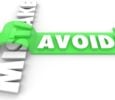Last year, Botox®, a medication containing Botulinum Toxin A, was routinely injected into over 2.5 million Americans and generated $1.3 billion in sales. All this despite reports that Botox could cause symptoms similar to botulism, loss of bladder control, blurred vision, trouble breathing, swallowing and talking (not because of the size of those lips). Certified Legal Nurse Consultants working for plaintiff and defense firms should be aware that on April 30, 2009, the FDA issued a statement that all botulinum toxin products (including Botox and Botox Cosmetic) carry a black box label warning as well as a risk evaluation and mitigation strategy (REMS).
A black box is the strongest safety warning that a medication can carry and is so named for the black border that usually surrounds the text of the warning. These bold-faced labels carry risk information and are most often found on medications that have a probability of serious or life-threatening side effects. When combined with the REMS, their purpose is to alert healthcare professionals prescribing or dispensing the medication, as well as the patients receiving it, to health issues and dangers associated with its use. Botox, Botox Cosmetic, Myobloc® and Dysport® will all carry the FDA warning. Consumers experiencing serious adverse events (med-speak for side effects) from use of any of those products can report them to the FDA online as part of the FDA’s MedWatch Adverse Event Reporting program.
While the placement of a warning on the box does not free the manufacturer or healthcare professional from liability for damages caused by the product, it may give rise to an assumption-of-the-risk defense in certain cases. Botox and its kin are not used solely for cosmetic purposes. They do have some legitimate medical applications (treatment of cerebral palsy and cervical dystonia). I’ve always felt that we can’t insert or inject a foreign substance into our bodies without expecting some sort of side effect. So the next time a friend or relative tells you they’re considering the cosmetic use of Botulinum Toxin A to reduce wrinkles or to stop sweating, the savvy legal nurse consultant should tell them to consider that they’ve been warned.
Success Is Inside (naturally)!
P.S. Please comment to share any information you have about Botox.









I worked for several years in a cosmetic surgery office (classic fish-outta-water). Drug sales reps were pushy and frequently broke the law by discussing innumerable off label uses. The two most vivid areas were by endoscopy into the stomach (for weight loss) and penis (for “enhancement”), not to mention all the facial areas for cosmetic treatments. The only on label areas are frown lines (glabellar), axillary (for hyperhydrosis) and the treatments you mentioned Vickie. There have been many cases of pediatric botulism in children with CP (used to relax contractures).
Sales of cosmetic Botox have dropped in the recession. Dysport was just approved by the FDA so it will now compete with Botox for the cosmetic dollars. I predict the off label abuses and illegal promotion will increase.
And no, I have never personally tried Botox!
Do you know that dentists, medical doctors, even some eye doctors are getting “trained” to inject Botox®. Why? It is cash money. No insurance company involvemnt (except for using as a therapeutic modality). Reimbursement is so poor for the healthcare industry that healthcare providers are seeking alternative methods to make money. They have Botox® parties where groups of people either go to the provider’s office or the provider goes to party host’s. Most do not think about potential side effects. Not saying it shouldn’t be done or given. I personally would want someone, like a plastic surgeon or a derm to give it.
Hi Vickie: Enjoyed your comments on Botox. I’ve been a nurse injector for the past 15 years and use Botox daily for my clients. To date, I’ve had no reports of adverse effects, not to say it isn’t possible.
One thing I would like to comment on is that Botox is not used to fill out and enhance lips, occasionally some brave injectors will put a very small amount just above the lip to reduce the pucker lip. To fill the lip would require a filler material, i.e. Restylane, Juvederm, Perlane, and yes even silicone (I shudder with this one).
Great comments on Botox and related products. This reminds me of a recent research project for an attorney concerning tattoo removal with a product called Rejuvi. The product is “tattooed” over the tattoo to be removed. Supposedly, it binds with the tattoo ink breaking it down so that the body can then reject the tattoo ink and bring it to the surface. A scab covering will slowly peel off with tattoo ink in it. Several procedures may need to be done to remove as much as possible. There are risks that can cause bad outcomes.
I never knew there were so many ways to remove or hide a tattoo: chemical peels, ink extraction, salabrasion, dermabrasion, excision, laser, creams, cover-up, skin graft, cryosurgery, tissue expansion, just to name some of them that I came across. One website talked about “if thy right arm offends thee, cut it off.”
The products for tattoo removal sold to nonmedical individuals such as cosmetologists, tattoo artists, permanent makeup artists, etc. are not approved by the FDA. However, more and more nurses and physicians are getting into the body art and cosmetology business. This was an interesting case.